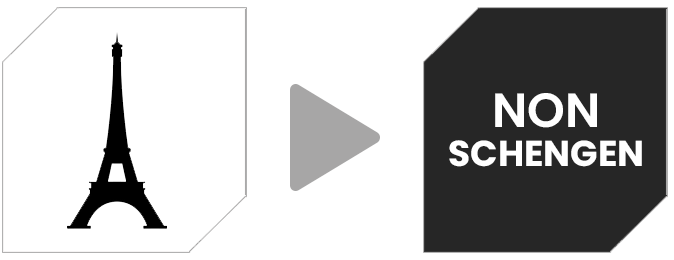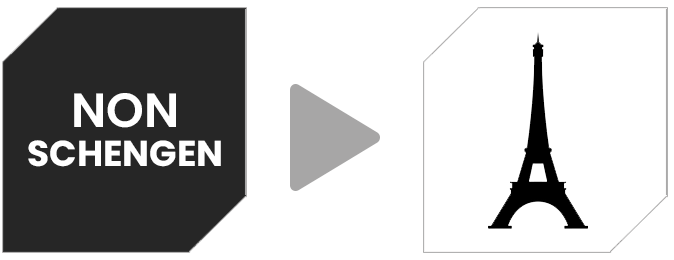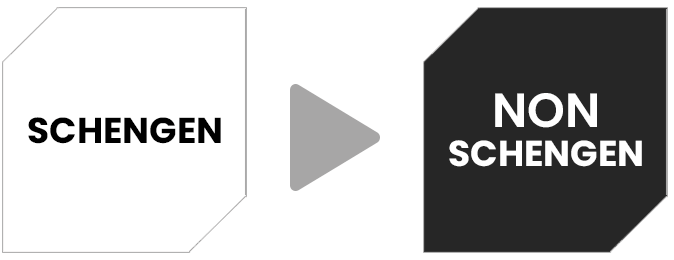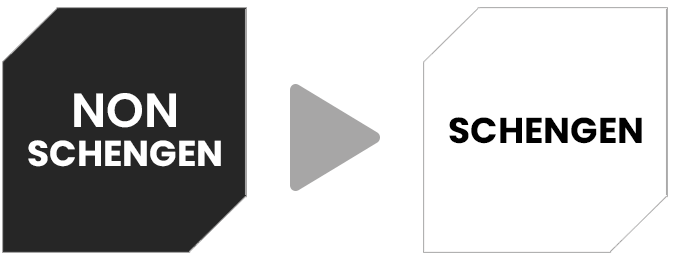Make sure you are familiar with the passport control & immigration procedures
at Paris-Charles de Gaulle Airport.
You should always carry a valid passport or identity card when travelling by air.
Please do not forget to check whether you need other documents, such as a visa.
Travel documents are systematically checked by the Border Police in the following cases :
Schengen area countries
France + Austria, Belgium, Bulgaria, Czech Republic, Denmark, Estonia, Finland, Germany, Greece, Hungary, Iceland, Italy, Latvia, Liechtenstein, Lithuania, Luxembourg, Malta, Netherlands, Norway, Poland, Portugal, Romania, Slovakia, Slovenia, Spain, Sweden, Switzerland.
Entry requirements & Visa
French Border Police officer will ask to see your passport or identity card and any supporting documentation necessary for your visit.
Have your boarding pass and travel documents ready open at the photo page and proceed in the appropriate line :
■ EU/EEA/CH passports
■ Other passports
■ Fast lane Accès no.1 or Sky Priority (by invitation only)
List of countries whose nationals need a Schengen visa
NATIONALS OF COUNTRIES LISTED BELOW
NEED A VISA TO ENTER FRANCE & THE SCHENGEN AREA :
A
Afghanistan
Algeria
Angola
Armenia
Azerbaijan
B
Bahrain
Bangladesh
Belarus
Belize
Benin
Bhutan
Bolivia
Botswana
Burkina Faso
Burma/Myanmar
Burundi
C
Cambodia
Cameroon
Cape Verde
Central African Republic
Chad
China
Congo
Cote d’Ivoire
Cuba
D
Democratic republic of Congo
Djibouti
Dominica
Dominican Republic
E-F
Ecuador
Egypt
Equatorial Guinea
Eritrea
Ethiopia
Fiji
G-H
Gabon
Gambia
Georgia
Ghana
Grenada
Guinea
Guinea-Bissau
Guyana
Haiti
I-J
India
Indonesia
Iran
Iraq
Jamaica
Jordan
K-L
Kazakhstan
Kenya
Kiribati
Kosovo
Kuwait
Kyrgyzstan
Laos
Lebanon
Lesotho
Liberia
Libya
M
Madagascar
Malawi
Maldives
Mali
Marshall Islands
Mauritania
Micronesia
Moldova
Mongolia
Morocco
Mozambique
N-O
Namibia
Nauru
Nepal
Niger
Nigeria
North Korea
Oman
P-Q
Pakistan
Palau
Palestinian authority
Papua New Guinea
Philippines
Qatar
R-S
Russia
Rwanda
Samoa
São Tomé and Principe
Saudi Arabia
Senegal
Sierra Leone
Solomon Islands
Somalia
South Africa
Sri Lanka
St Lucia
St Vincent and the Grenadines
Sudan
Surinam
Swaziland
Syria
T
Tajikistan
Tanzania
Thailand
The Comoros
Timor-Leste
Togo
Tonga
Trinidad and Tobago
Tunisia
Turkey
Turkmenistan
Tuvalu
U-V-Y-Z
Uganda
Ukraine
United Arab Emirates
Uzbekistan
Vanuatu
Vietnam
Yemen
Zambia
Zimbabwe
Do you need a visa for connecting flights at Paris-CDG ?
TRANSFERRING/ENTERING TO FRANCE & SCHENGEN AREA FROM NON-SCHENGEN COUNTRIES
Non-EU nationals may need a visa, depending on their nationality (see list of countries above) and on the rules in the country where they wish to travel to.
TRANSFERRING WITHIN NON-SCHENGEN COUNTRIES
Passengers with no need to check-in or pick-up bags at Paris-CDG do not need a visa for connecting flights.
Please note, if you need to leave the transit area to pick up baggage and check-in, you must clear a border control, please ensure that you comply with entry & visa requirements.
Which countries are in the Schengen area ?
France + Austria, Belgium, Czech Republic, Denmark, Estonia, Finland, Germany, Greece, Hungary, Iceland, Italy, Latvia, Liechtenstein, Lithuania, Luxembourg, Malta, Netherlands, Norway, Poland, Portugal, Slovakia, Slovenia, Spain, Sweden, Switzerland.
What is Schengen ?
The Schengen Agreement (takes its name from the town of Schengen in Luxembourg, where the original agreement was signed) is a treaty which led to the creation of Europe’s Schengen Area.
The Schengen area includes 26 European countries which have decided to remove all internal border controls, which means that travellers can move freely within the area without having to show their passports.
How to apply for a Schengen visa ?
A Schengen visa must always be applied at the Embassy of the country of your main destination.
If you do not have a main destination and if you are visiting several countries within the trip, you should apply at the Embassy of the country of your first destination.
ENTRY CONDITIONS TO THE SCHENGEN AREA
- You must be able to explain why you want to enter the Schengen area and to prove the conditions of your stay.
- You must be able to show that you have sufficient financial means for the duration of the stay and for your return.
- You must not be considered to be a threat to public policy, internal security, public health,…
- You must not have an alert issued in the Schengen Information System for the purposes of refusing entry.
With a Schengen visa you can travel to any or all of the 26 Schengen area countries for the period of validity of your visa.
You do not have to show your passport when crossing borders between countries within the Schengen area.
e-Gates PARAFE
PARAFE ePassport gates are automated self-service barriers.
They are located at immigration checkpoints of Terminal 1, 2, 3.
Citizens from the 27 countries of the EU, or a national of from Australia, Canada, Iceland, Japan, Liechtenstein, New Zealand, Norway, South Korea, Switzerland, Singapore and the United Kingdom can use the PARAFE gates.
Currently, all PARAFE gates can only be used by citizens aged 18* or over holding valid biometric passports.
* European minors aged 12 and over can also use PARAFE when arriving in France only (they are not allowed to use PARAFE on departure).



